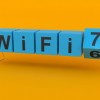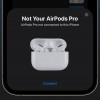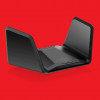Intro to 802.11g
Source: Wireless Starter Kit
In 2002, Wi-Fi--mostly in the form of 802.11b equipment--ruled the land. The faster, 54 megabit-per-second (Mbps) 802.11a devices that shipped during 2002 seemed interesting, but because they used a different frequency than 802.11b and also cost more, only a small number of early adopters and testers bought in.
More promisingly, 802.11g winked at us from the horizon. That standard runs, like 802.11a, at 54 Mbps but with full backward compatibility with 802.11b. Because of political and technical conflicts, the specification's IEEE committee work dragged on, but a final version appears likely to be ratified by summer or fall 2003.
Technology doesn't wait for engineering groups, though: against some industry experts' better judgment, several companies have started to ship equipment based on chipsets that use a draft version of 802.11g to achieve the higher speed and better indoor signal characteristics.
Apple, of course, was one of the first out of the gate--just like with 802.11b--announcing new products under the AirPort Extreme name in January 2003 at the Macworld Expo. But Linksys, Buffalo, and Belkin--in roughly that order-- beat Apple to the punch by shipping a variety of gateways and adapters in December 2002 and January 2003, but Apple has released substantially more detail about their equipment while also offering a few interesting features in their new wireless gateway that may tempt people with no Macintoshes in sight.
In this addendum to The Wireless Networking Starter Kit, we discuss the forward and backwards compatible issues with 802.11g and Apple's AirPort Extreme, and run through Apple and other vendor's equipment.









































































